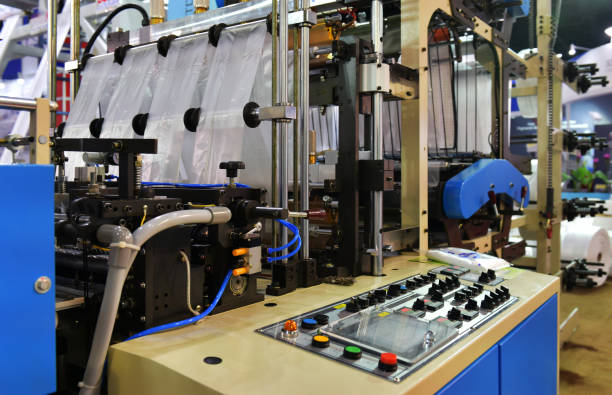In the bustling kitchens of India, one element stands out as indispensable: LPG or liquefied petroleum gas. Its significance extends beyond mere convenience; it’s a lifeline for millions of nationwide households. LPG ensures meals are prepared efficiently, cleanly, and reliably as the primary cooking fuel.
However, the cost of this essential commodity has recently come into focus. At the start of February 2024, significant revisions in LPG prices swept across the country, prompting households to take notice. The fluctuation in LPG prices directly impacts the daily lives and budgets of Indian families, making it a topic of keen interest and concern.
Understanding the dynamics of LPG pricing is crucial for consumers and policymakers. It directly influences household expenditures and is pivotal in shaping economic policies. So, let’s take a closer look at why LPG prices matter and how they impact our lives.
Current LPG Price in India
As of February 6, 2024, the prices of domestic and commercial LPG cylinders vary across major cities in India. Here’s a breakdown of the current prices in some prominent cities:
Domestic LPG Cylinder Prices (14.2 KG)
| City | Price (Rs.) |
| New Delhi | 903.00 |
| Mumbai | 902.50 |
| Gurgaon | 911.50 |
| Bengaluru | 905.50 |
| Chandigarh | 912.50 |
| Jaipur | 906.50 |
| Patna | 1,001.00 |
| Bhubaneshwar | 929.00 |
| Hyderabad | 955.00 |
| Lucknow | 940.50 |
| Trivandrum | 912.00 |
| Noida | 900.50 |
| Kolkata | 929.00 |
| Chennai | 918.50 |
Commercial LPG Cylinder Prices:
| City | Price (Rs.) |
| Delhi | 1796.50 |
| Mumbai | 1749.00 |
| Chennai | 1968.50 |
| Kolkata | 1908.00 |
Difference between Domestic and Commercial Cylinders
Domestic LPG cylinders are primarily meant for household use, typically for cooking. The government subsidizes these cylinders to ensure affordability for consumers. Each household is entitled to several cylinders at subsidized rates per year.
On the other hand, commercial LPG cylinders are designed for industrial and commercial purposes. These cylinders are priced differently and are not subsidized by the government. They are used in various industries, restaurants, hotels, and other commercial establishments.
Price Variations across States or Regions
Transportation costs, taxes, and local regulations influence price variations in LPG cylinders. Therefore, prices may vary slightly from one state or region to another. For instance, while the cost of an LPG cylinder in New Delhi is Rs.903.00, it may differ in other cities or states due to these factors.
Note: The price information has been sourced from BankBazaar, a reliable commodity exchange platform. Understanding these price differentials and distinctions between domestic and commercial cylinders is essential for consumers to make informed decisions regarding their LPG usage and expenditures.
Choosing Your Cooking Companion: Top Gas Connection Providers in India
In India, several LPG gas connection providers cater to the diverse needs of consumers. Here are India’s top gas connection providers; let’s discuss each.
Under Hindustan Petroleum Corporation Limited (HPCL), HP Gas offers nationwide coverage. Their services focus on providing convenience and reliability to consumers. With user-friendly online platforms for booking and tracking, HP Gas ensures seamless transactions. Moreover, their commitment to safety and quality is evident through stringent standards and practices, making them a preferred choice for many households.
Operated by Bharat Petroleum Corporation Limited (BPCL), Bharat Gas is renowned for its widespread distribution network, ensuring accessibility to consumers in both urban and rural areas. They prioritize innovation and sustainability, offering initiatives like mobile app-based services and eco-friendly practices. Bharat Gas customer-centric approach and emphasis on safety contribute to its popularity among consumers nationwide.
- Indane Gas
Indane Gas, a subsidiary of Indian Oil Corporation Limited (IOCL), is synonymous with reliability and efficiency. With an extensive network of distributors, they ensure timely delivery of LPG cylinders across India. Their online portal provides seamless booking, payment, and refill options, while their responsive customer support and commitment to transparent pricing make them a trusted choice for millions of households.
- Reliance Gas
As part of Reliance Industries Limited (RIL), Reliance Gas prioritizes convenience and technological innovation. Their user-friendly online platform enables easy booking and payment, while doorstep delivery services enhance customer experience. With a focus on customer satisfaction, Reliance Gas aims to provide seamless experiences for consumers across the country.
- Total Gaz
Total Gaz, a subsidiary of TotalEnergies, leverages its global expertise to offer high-quality LPG products in India. They prioritize safety and environmental responsibility, adhering to global standards and sustainable practices. With reliable distribution channels and customer support services, Total Gaz aims to meet the evolving needs of consumers while minimizing environmental impact.
Choosing the right connection provider
Each LPG gas connection provider in India brings its distinct features and strengths to the table, catering to the diverse needs of consumers nationwide. While factors like regional availability may vary, consumers can select the provider that closely aligns with their preferences and requirements for a seamless and reliable LPG experience.
Understanding the Fluctuations: Factors Affecting LPG Prices in India
The prices of LPG in India are subject to various factors, each playing an essential role in determining the final cost to consumers. Let’s discuss these factors:
- Global Crude Oil Prices: Global crude oil prices significantly influence domestic LPG prices in India. LPG is considered to be the byproduct of crude oil refining; its pricing is closely tied to international crude oil market fluctuations. When global crude oil prices surge, the cost of producing LPG increases, leading to higher prices for consumers in India. Conversely, declines in global crude oil prices typically result in reduced LPG prices domestically.
- Government Subsidies: To alleviate the financial burden on citizens, the Indian government provides subsidies on domestic LPG cylinders. These subsidies bridge the gap between the international market price of LPG and the price consumers pay, particularly for the first 12 cylinders per year. It’s important to note that these subsidies are variable and can be subject to changes based on government policies and international market trends. While subsidies help maintain affordability for consumers, they also pose fiscal challenges for the government and require prudent management.
- Exchange Rates: The worth of the Indian rupee, in comparison to other currencies, notably the US dollar, plays a crucial role in determining LPG prices. Since LPG prices are often linked to dollar-denominated international benchmarks, fluctuations in the exchange rate can significantly impact import costs. A weaker rupee relative to the dollar increases the cost of importing LPG, potentially leading to higher domestic prices. Conversely, a stronger rupee may mitigate import costs, lowering LPG prices for consumers.
- Transportation Costs: Transportation costs in distributing LPG cylinders from refineries or import terminals to various regions across India also contribute to the overall cost structure. Factors like distance, infrastructure, and logistics networks impact transportation expenses, thereby influencing the final retail prices of LPG cylinders in different parts of the country.
By understanding the complex connection between these factors, consumers can gain insights into the reasons behind LPG price fluctuations and make informed decisions regarding their energy consumption and expenditures.
The Impact of LPG Price Rise on Consumers
You’ve probably noticed the recent hike in LPG prices, and it’s hitting households hard, especially those on tight budgets. For low-income families, every rupee counts, and the increased cost of cooking fuel means making tough decisions—sometimes sacrificing meals or other essentials to afford those LPG cylinders.
You might be wondering if there are other options out there. Well, alternatives like biogas or electric induction cooktops sound great. Still, the upfront costs and infrastructure needed can overwhelm many families. Even improved biomass stoves, while more affordable, come with their concerns, like health and environmental impact.
Government Initiatives to Mitigate Impact
Thankfully, the government recognizes the strain on consumers and has taken steps to alleviate it. Subsidy programs and targeted assistance initiatives, such as the Pradhan Mantri Ujjwala Yojana (PMUY) scheme, provide subsidized LPG connections to low-income households. However, challenges remain in ensuring consistent supply and affordability for refills beyond the subsidized quota. To address these challenges, continued exploration of innovative policies is crucial to safeguarding the well-being of vulnerable households. Plus, they’re spreading the word about energy-saving practices, allowing us to make smarter choices about using our resources.
But let’s be honest—making alternative fuels accessible and affordable for everyone won’t happen overnight. It will take ongoing efforts and creative solutions from government and society to tackle this challenge. So, while we navigate these price hikes, let’s keep pushing for a future where energy is sustainable and accessible to all.
“Remember, affordable and clean cooking shouldn’t be a luxury, but a right enjoyed by every household in India.”
Future outlook on LPG pricing trends
As we look ahead, several potential factors could influence LPG prices in India in the coming months. Fluctuations in global crude oil prices remain a key determinant, with geopolitical tensions, supply-demand dynamics, and economic factors impacting the market. Additionally, currency exchange rates, government policies, and environmental regulations may significantly shape future price trends.
While expert predictions and market trends offer valuable insights, the unpredictability of global energy markets underscores the need for caution. While some anticipate stabilization or a slight price decrease due to increased production and easing geopolitical tensions, others warn of potential volatility because of the problems between the countries and supply disruptions.
Ultimately, we’re still determining what will happen to LPG prices in India. Even though experts and trends can give us an idea, things can change fast. It’s essential to keep an eye on what’s happening and be ready to adapt.
Closing thoughts
In this article, we’ve delved into the intricacies surrounding LPG prices in India, exploring the factors influencing fluctuations and the implications for consumers. We’ve provided a detailed overview of the current LPG prices across major cities, shedding light on the economic realities faced by households, especially those in low-income brackets. Additionally, we’ve examined the top gas connection providers in the country, highlighting their key features and roles in ensuring access to clean cooking fuel.
Amidst the challenges posed by rising prices, it’s crucial to recognize the vital role of LPG in Indian households and the need for responsible consumption. Government initiatives like the Pradhan Mantri Ujjwala Yojana (PMUY) scheme strive to address affordability concerns, but further efforts are required to ensure all have access to clean cooking fuel.
As we navigate the complexities of energy pricing and distribution, it’s imperative to prioritize sustainability and equitable access to essential resources. LPG is not just a commodity; it’s a lifeline for millions of households across India. Let’s continue the dialogue on responsible consumption and energy equity, envisioning a future where affordable and clean cooking is not a luxury but a fundamental right for all.
In closing, let’s ponder: How can we collectively work towards a more sustainable and inclusive energy future where every household in India has access to affordable and clean cooking fuel? It’s a challenge worth tackling for the well-being of present and future generations.



